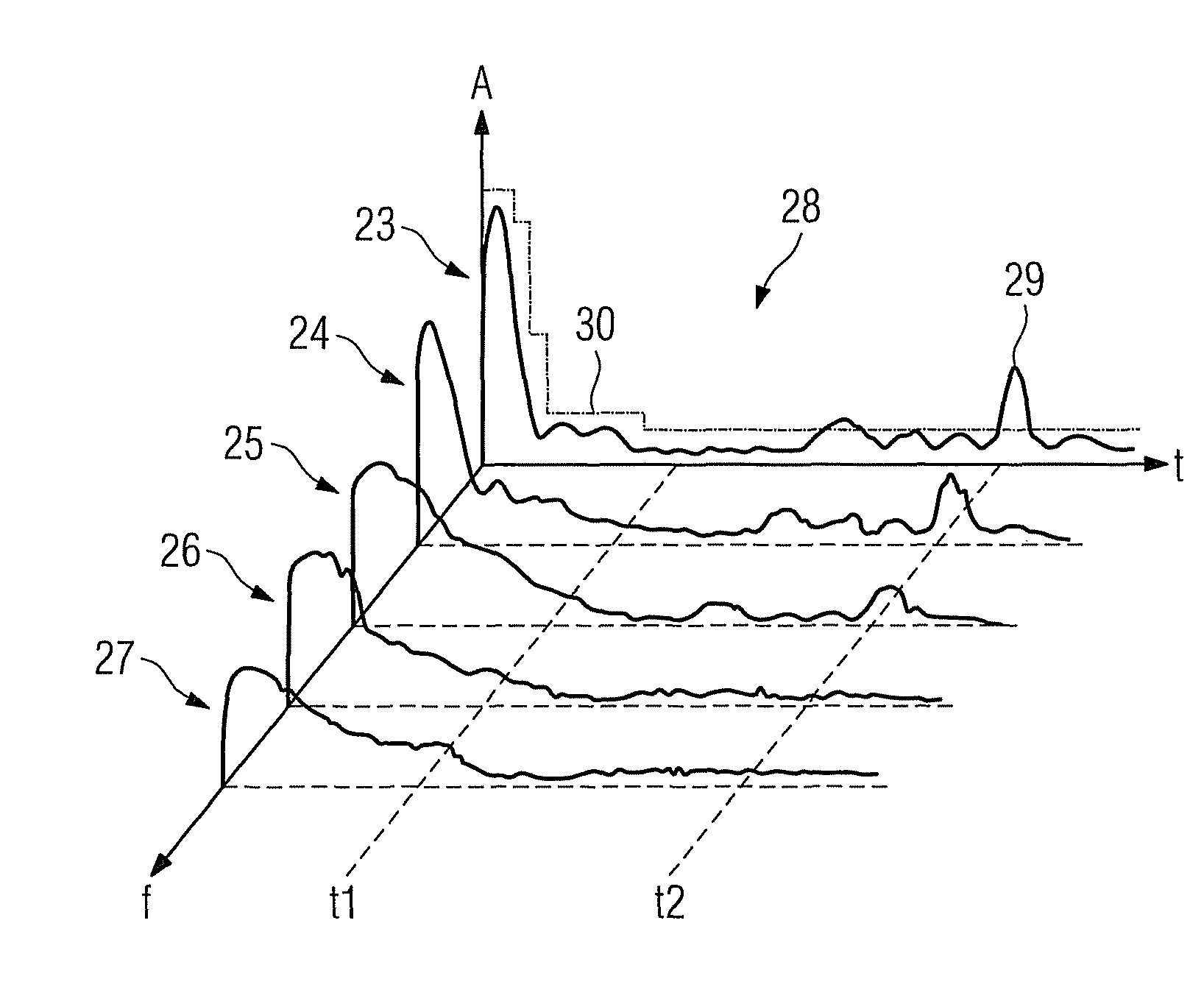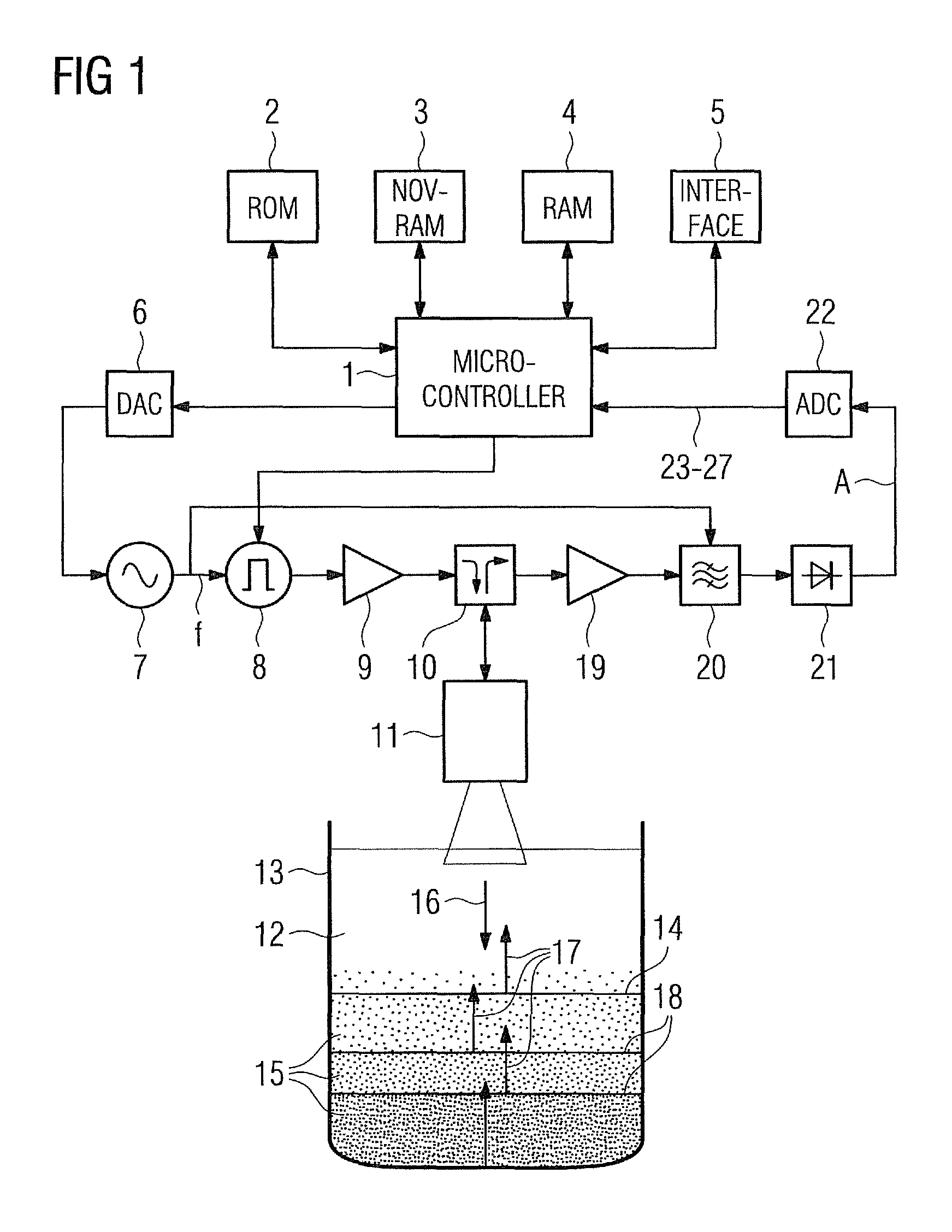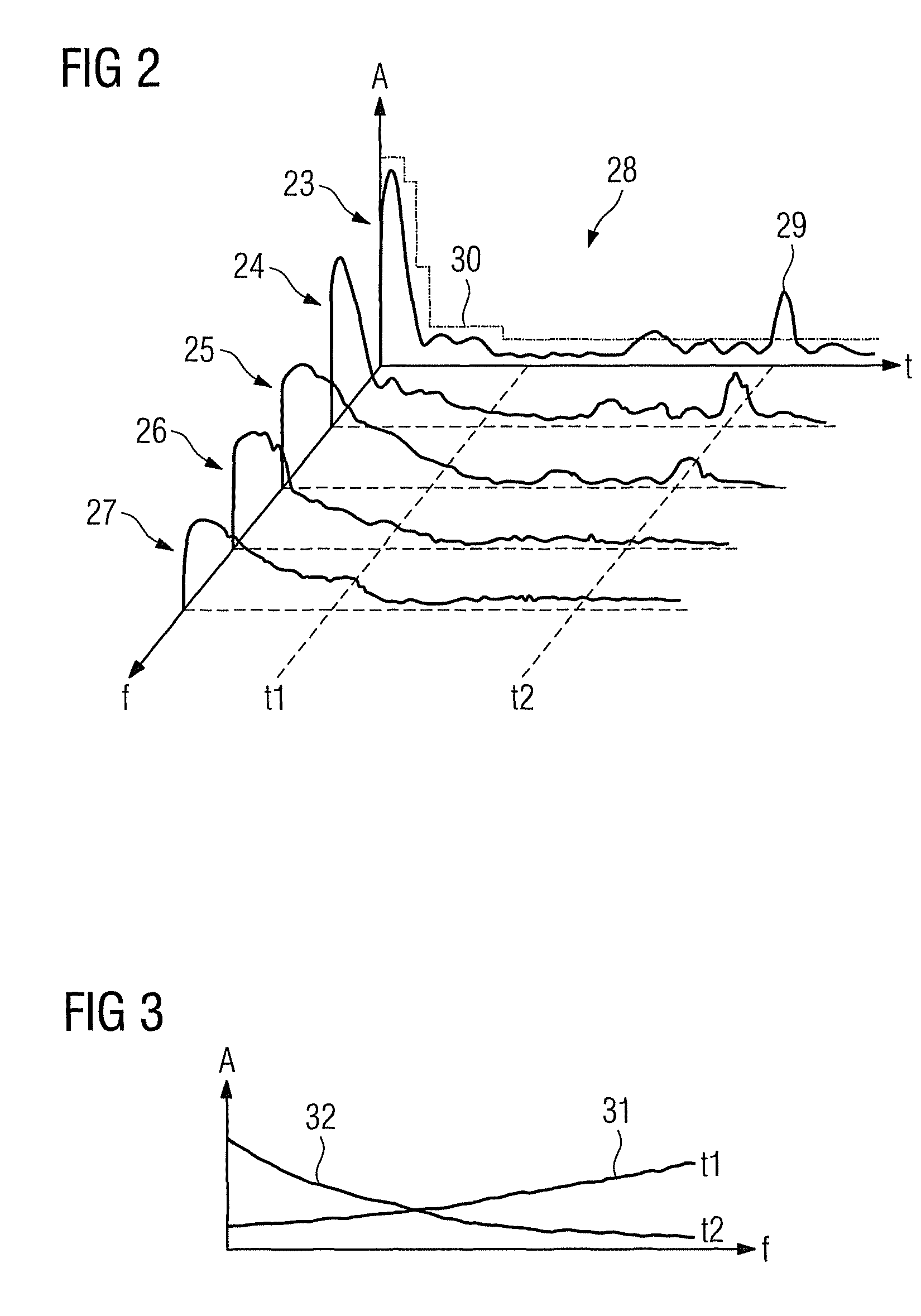Method of operating an acoustic pulse echo ranging system
a ranger and echo ranging technology, applied in the field of acoustic pulse echo ranging system, can solve the problems of inability to detect, high frequency, ineffective detection,
- Summary
- Abstract
- Description
- Claims
- Application Information
AI Technical Summary
Benefits of technology
Problems solved by technology
Method used
Image
Examples
Embodiment Construction
[0020]Referring to FIG. 1, there is shown a simplified schematic diagram of an acoustic pulse echo ranging system controlled by a microcontroller 1 which operates under a control program stored in read-only memory (ROM) 2, utilizing parameters stored in non-volatile random access memory (NOVRAM) 3, and provided with working memory in the form of random access memory (RAM) 4. An interface 5 provides for the export of measurement data and the import of operating parameters. Data may be exported in the form of a display, telemetry (e.g. bus) signals and / or alarm signals. The microcontroller 1 also controls, via a digital to analog converter 6, a voltage controlled oscillator 7 to successively increase or decrease its output frequency f over a range from e.g. 60 to 800 kHz. A pulse generator 8 is triggered by the microcontroller 1 to generate bursts of the instantaneous frequency f and to apply these bursts via a power amplifier 9 and a multiplexing gate or switch 10 to a wideband acous...
PUM
 Login to View More
Login to View More Abstract
Description
Claims
Application Information
 Login to View More
Login to View More - R&D
- Intellectual Property
- Life Sciences
- Materials
- Tech Scout
- Unparalleled Data Quality
- Higher Quality Content
- 60% Fewer Hallucinations
Browse by: Latest US Patents, China's latest patents, Technical Efficacy Thesaurus, Application Domain, Technology Topic, Popular Technical Reports.
© 2025 PatSnap. All rights reserved.Legal|Privacy policy|Modern Slavery Act Transparency Statement|Sitemap|About US| Contact US: help@patsnap.com



